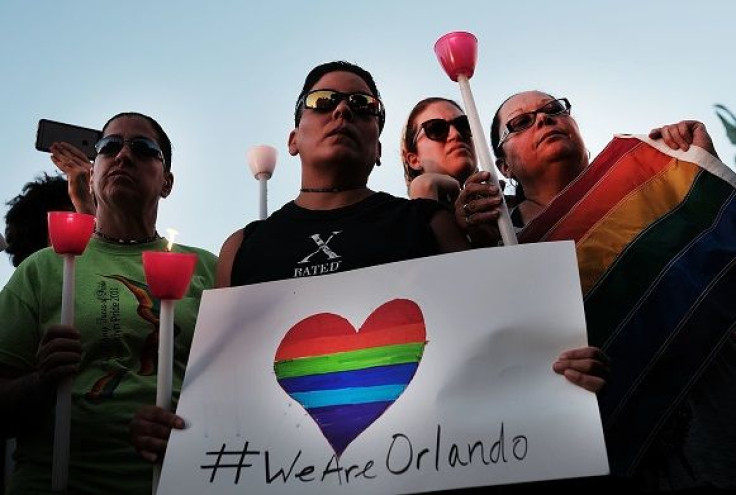Beyond Orlando Shooting: Homicides Of LGBT And HIV-Affected People Rose 20% In 2015, Study Finds

After the massacre at a gay nightclub in Orlando, Florida, over the weekend, many have noted that it was one of the worst mass shootings in American history and have called for stronger gun control and counterterrorism efforts. But as horrific as this incident was, it’s just the latest in a rising tide of killings of LGBT people.
Killings of LGBT and HIV-affected people in the United States have risen 20 percent since 2014, according to a report released by the National Coalition of Anti-Violence Programs this week. The study found 24 reported hate violence homicides in 2015, making last year the deadliest since 2012.
In Orlando, 49 people were killed and 53 wounded before dawn Sunday morning. Even if no other attacks on LGBT people take place this year, the tragedy would make the 2016 figures 100 percent higher than those in 2015, as the Guardian noted.
Identity played a large part in who was targeted, according to the report. People of color, transgender and gender-nonconforming people made up a majority of the victims of hate violence. Of the 24 reported homicides, 62 percent were people of color and 67 percent were transgender or gender-nonconforming individuals.
The most vulnerable group was transgender women of color, who made up 54 percent of the homicides. While transgender people have become more visible in mainstream media and pop culture in the past few years with figures like Laverne Cox and Caitlyn Jenner, they have also experienced a sharp increase in violence. Last fall, the Human Rights Campaign, an LGBT advocacy group, released a report showing that more transgender people were killed in 2015 than any other year on record.
Among people who survived hate violence, the NCAVP report found that people of color were twice as likely to experience physical violence as their white peers, and undocumented immigrant survivors were four times more likely than other survivors to experience physical violence.
The report likely represents a low estimate of the violence against LGBT people across the country. The NCAVP collected its data from 13 member organizations in 12 states and used information from public sources or directly from survivors.
FBI hate crime statistics can show a larger number of incidents based on prejudice, the Guardian reported. In 2014, the most recent year for which data is available, 1,248 people in the U.S. — or 18.6 percent of all hate crime victims — were targeted because of their sexual orientation or gender identity.
However, the NCAVP report also notes that low reporting rates can affect the reliability of any hate crime statistics. Just 41 percent of LGBT and HIV-affected people who experienced hate violence reported the incident to law enforcement in 2015, down from 54 percent in 2014. Overall, the trends in the report show that the U.S. has not made progress in stopping anti-LGBT violence over time. The number of homicides has fluctuated over the years, but in 2006, the number of killings was 10 — less than half of what it was last year.
© Copyright IBTimes 2024. All rights reserved.












